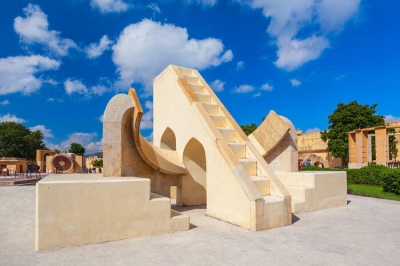
1. A king and his love for astronomy
The Jantar Mantar in Jaipur is one among five such observatories built by Rajput king Sawai Jai Singh II, the founder of Jaipur. Jai Singh II was extremely enthusiastic about astronomy and even owned telescopes. He came up with the idea of building the astronomical observatories in India when he noticed that the astronomical tables of the Zij (an islamic astronomical book that tabulates parameters used to calculate the positions of the Sun, Moon, stars, and the planets) were incomplete. He used the observatories to come up with a more accurate zij and new astronomical tables known as the zij-i Muhammad Shahi. These tables were used in India for nearly a century.
2. One among five observatories
The Jantar Mantar in Jaipur is the largest among the five observatories built by Jai Singh II, and the only one among the five to receive the UNESCO World Heritage tag. The other observatories, also called Jantar Mantar, were built in Delhi, Varanasi, Mathura, and Ujjain between 1724 and 1735. However, today only four of these exist. The one in Mathura was destroyed just before the Revolt of 1857.
3. Astronomy with the naked eye
The monument has a collection of 19 astronomical instruments constructed out of local stone and marble. Each of these giant instruments caries an astronomical scale and facilitates calculation of the positions and distances of the celestial bodies with the naked eye.
4. World’s largest stone sundial
The Jantar Mantar in Jaipur is home to the largest stone sundial in the world. The Vrihat Samrat Yantra, which stands at the centre of the observatory, is a 27m-tall sundial which can help calculate time accurately down to two seconds.
5. No longer in use
Apart from stone and marble, bronze tablets, bricks and mortar were employed during the construction of the observatory. The Jantar Mantar was in continuous use till about the early 1800s, and then fell into disuse. It was restored several times during the British rule. Today, the observatory serves as a tourist attraction, kindling students interest in astronomy through guided tours, and music and light shows. It was declared a national monument in 1948, and a UNESCO World Heritage Site in 2010.
Picture Credit : Google

